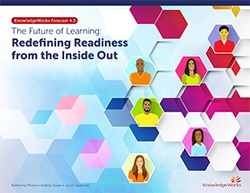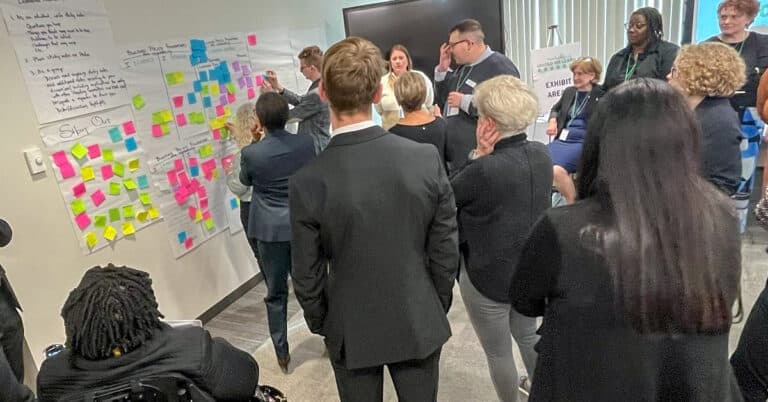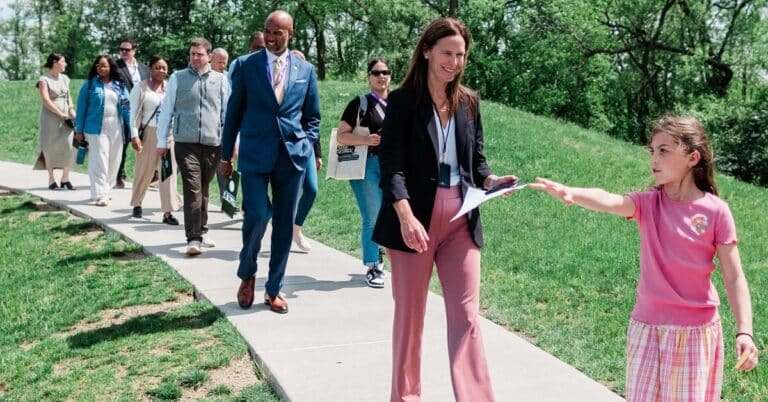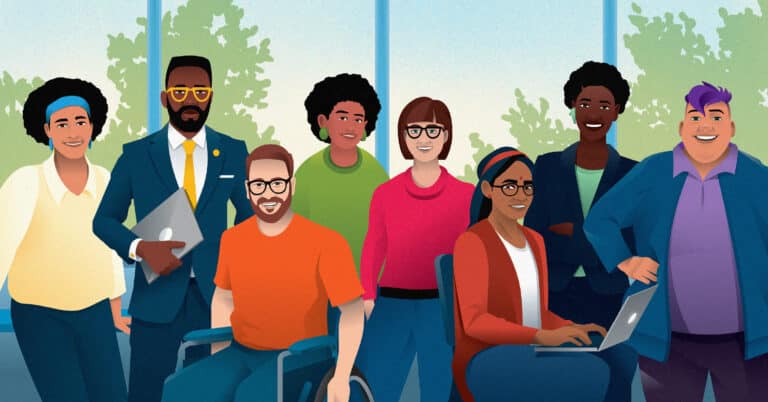 A few weeks ago, I attended the 2017 Close It Summit. The theme of the conference was “Shift Happens,” and, over the course of three days, postsecondary educators, education innovators and employers gathered to shared ideas, strategies and practices for better preparing learners to enter the employment sector as the way we work changes.
A few weeks ago, I attended the 2017 Close It Summit. The theme of the conference was “Shift Happens,” and, over the course of three days, postsecondary educators, education innovators and employers gathered to shared ideas, strategies and practices for better preparing learners to enter the employment sector as the way we work changes.
Reflecting on the summit, one of the most striking aspects of the three days was that, despite the diverse set of speakers and talks, one theme seemed to surface again and again: the need to develop a shared language about the skills and competencies needed by the employment sector, for use not only across the employment sector, but also by K-12 education systems and postsecondary and higher education institutions.
I was pleased to see this theme run so strongly throughout the summit. It is my belief that not only is a shared language needed, but such a language should begin with a new definition of readiness. KnowledgeWorks’ latest strategic foresight publication, “The Future of Learning: Redefining Readiness from the Inside Out,” details the need to redefine readiness and presents a new foundation for readiness informed by the ways work is changing. The paper examines how the rise of smart machines, which include technologies such as artificial intelligence, machine learning, robotics and other forms of automation and which are increasingly capable of doing tasks or jobs once thought safe from automation, is changing how many tasks associated with work are completed. The paper also explores how work is being organized differently than it once was, with full-time employment on the decline and the average job tenure falling, the emergence of gig or project-based work, where a worker is hired to complete a defined scope of work, and taskified work, where a person is hired to complete a small task.
While the long-term effects of these changes are uncertain, in the near- to mid-term they are leading to a decline in the shelf-life of skills. This is due to two factors. The first is that smart machines are taking over as our dominant production paradigm. They will be increasingly vital to the completion of work. Being digital technologies, they will also improve and become more affordable at an accelerating rate. These developments will make them be able to accomplish an expanding range of tasks and will also incentivize their adoption. The second factors leading to the decreasing shelf-life of skills is that, as job tenure declines and work becomes increasingly atomized, causing more people to move from linear careers to project- and task-based work, the need to reskill rapidly will become more and more pronounced.
The long-term uncertainty about the future of work and the shrinking shelf life of skills creates a need to redefine what it means to be ready for work. Our paper proposes a new foundation of readiness that is intended to leverage people’s uniquely human aspects so that we can prepare to thrive no matter what future of work comes to fruition, from a post-work future to one in which we are utilizing our smart machine partners to complete jobs we can’t yet imagine. This new foundation for readiness appears below.
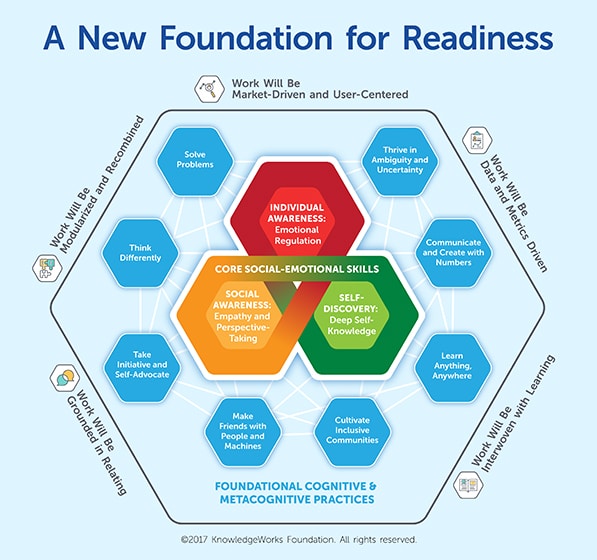
These core social-emotional skills and foundational cognitive and metacognitive practices promise to help people develop the capacity to learn the more specific skills needed for rapidly changing employment contexts and to leverage their uniquely human traits in the workplace.
The uncertainty about the future of work, while at times daunting, is providing the opportunity rethink what skills and traits will be needed to help people prepare for the workforce. As the future of work unfolds around us, the new foundation for readiness might help provide the beginnings of a shared language across sectors. As work changes and readiness is redefined, speaking a shared language of readiness will be vitally important to ensure that all learners are ready for any future of work that might emerge.
